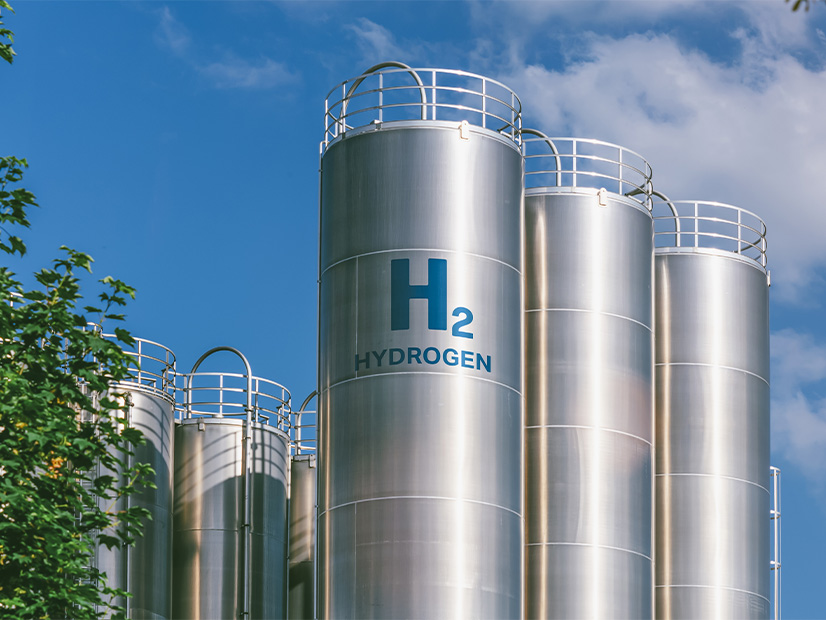Low-carbon hydrogen production and cleaner electric generation are the goals of a global effort led by governments and corporations trying to slow climate change by drastically reducing carbon dioxide emissions within the decade.
But the two goals appear to be at odds, in a collision involving environmentalists and technology trade groups battling over how much clean electricity can be diverted from the grid to produce hundreds of millions of tons of hydrogen annually.
At least half a dozen groups filed comments months ago with the U.S. departments of Energy and the Treasury to influence the creation of the rules that the IRS will use to determine the size of the production tax credits authorized by the Inflation Reduction Act for hydrogen production as well new renewable energy projects. Renewable energy producers are expecting at least a preliminary announcement on the rules later this summer.
The IRA authorizes a tax credit of 2.75 cents/kWh generated and up to $3/kg of hydrogen produced for the first 10 years of operation. The legislation also extends the 30% investment tax credit for at least two years.
The collision of interests between the renewable energy industry and fledgling hydrogen producers is in the details, including:
-
- Whether existing wind and solar installations can divert their output from the grid to new power-hungry electrolyzers — possibly forcing more dirty power on the grid to make up for the diversion — or whether only newly built wind and solar generation can be used if the hydrogen producers want a tax credit;
- Whether electrolyzer companies relying on grid power must purchase additional renewable power by buying renewable energy credits (RECs) and in the same region, or will be allowed to perform the “true-up” annually by purchasing additional power for anywhere on the grid; and
- Whether electrolyzer companies should operate off the grid, producing hydrogen only when dedicated wind and solar power is available, or extend operations by also building on-site energy storage — options that potential hydrogen producers say will stunt the growth of the new industry.
The American Clean Power Association (ACP) issued a “Green Hydrogen Framework” last week distilling the conflicting issues and proposing a consensus resolution it said its 750 members would be able to endorse if DOE and the IRS adopt them.
The proposed compromise focuses on future hydrogen producers relying on grid power and would enable electrolyzer companies to buy power from existing wind and solar installations if they “are operational no earlier than 36 months” prior to the electrolyzer beginning production.
In other words, an electrolyzer company buying clean power from an older renewable energy facility would not qualify for IRA tax credits under this plan.
One exception under the ACP proposal: An electrolyzer company could buy from any existing wind and solar plant facing “persistent congestion.”
The ACP plan would also limit renewable energy purchases and credits to the same region in which an electrolyzer is operating.
Arguing that new production of green hydrogen should be continuous, the ACP plan would also phase in the requirement that hydrogen producers should replace renewable energy used by electrolyzer plants being built in 2029 and later years.
Those electrolyzer plants that begin construction before the end of 2028 could true-up the energy accounting requirement annually, according to the plan, an annual accounting rule that would be grandfathered in future years.
“This compromise framework offers a roadmap for effectively balancing the dual priorities of supporting early-market development of green hydrogen with maintaining a rigorous and robust standard for ensuring clean production,” the report argues.
“At present, green hydrogen is objectively not cost competitive with other forms of existing hydrogen production,” the reports notes in a reference to hydrogen split from methane. “Accelerating green hydrogen production through the Inflation Reduction Act’s clean hydrogen tax credits can help propel decarbonization across the economy — an estimated 90-million-ton reduction in carbon emissions each year by 2030.”
“These large emissions reductions are due to the fact that green hydrogen is essential for decarbonizing key sectors of the U.S. economy that are difficult to abate through direct electricity usage — including heavy-duty manufacturing, chemical production and heavy-duty transportation.”
The Fuel Cell & Hydrogen Energy Association criticized the ACP plan as a compromise that will “chill development.”
“The IRA offers a significant opportunity to reduce GHG emissions, decarbonize heavy-energy users and help achieve the Biden administration’s climate, energy security and clean manufacturing goals,” CEO Frank Wolak said. “We are concerned that the positions described by the American Clean Power Association, particularly on additionality, will chill development of the essential first generation of clean-hydrogen facilities. Restricting generators capable of selling environmental credits and leaving nuclear and hydropower out altogether are inconsistent with the broad intent of the IRA.”
The proposed resolution follows the publication of a least seven previous analyses and proposals from other groups, including one from the American Council on Renewable Energy and energy consulting firm Energy and Environmental Economics. (See How Green is that Green Hydrogen.)
For future producers of hydrogen, the debate about how future tax credits are determined is more than academic. (See Plug Power: Would-be ‘Category King’ of $10T Global Hydrogen Market and Air Products Plans $500M Hydrogen Plant in NY.)


